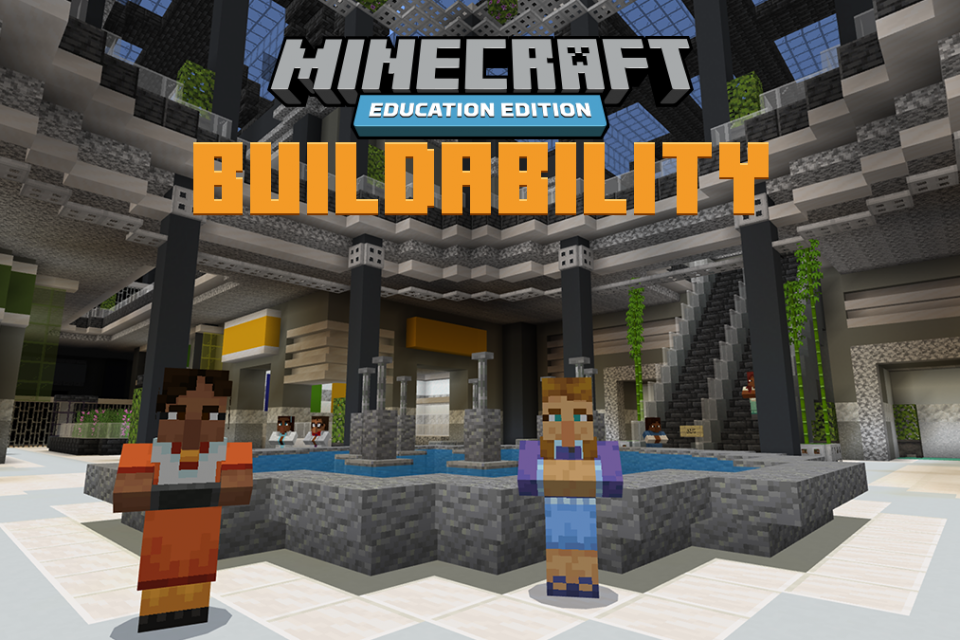By Jason Brommet, Accessibility Lead – Microsoft Canada
Our world is made up of many people with many different abilities. For some, moving through our communities and public spaces can be challenging. That’s why we’re excited to announce a new world in Minecraft: Education Edition that can help shape our own!
BuildAbility focuses on accessibility and building inclusive spaces. Students will begin by learning about five types of accessibility barriers: Attitudinal Barriers, Information or Communication Barriers, Organizational or Systemic Barriers, Physical Barriers, and Technological Barriers.
Next, they will explore different community spaces in Minecraft: Education Edition, where they will meet characters with diverse abilities. Characters will ask students to build and re-build spaces to make them accessible for all.
BuildAbility supports learners by encouraging deeper critical thinking, inquiry, and analysis of accessibility barriers explored through Minecraft. As learners identify barriers in-game, they will use inclusive design thinking and problem solving rooted in empathy and social emotional learning.
Collaborating with educators and students
Microsoft collaborated with Peel District School Board (PDSB) in Ontario, Canada, to develop BuildAbility. PDSB students and educators have been actively using Minecraft in their classrooms as a tool for engaging learning activities. We were excited to have the insights and expertise of a committee of educators who supported the development of the Minecraft world. More so, to ensure we were reflecting the lived experiences of those who face accessibility barriers, we learned directly from PDSB students about the ways in which they move through their own schools and communities, and the barriers they face. Their experiences have been included in BuildAbility.
Extended learning into the real world
BuildAbility has the goal of inspiring students to examine their world for the ways it is built with or without accessibility in mind. In BuildAbility, students are invited to explore three distinct areas, a school, a shopping center, and a community corner with a gas station and store. The world also features an open sandbox area allowing educators to present unique build challenges focused on inclusive design. Students can extend their learning into the real world by identifying barriers in their own schools and communities and proposing new ways to build spaces that are more accessible and inclusive for everyone.
The world is accompanied with an Educator Guide, providing educators guided lessons and resources to support learning about accessibility barriers, as well as discussion prompts and inquiry questions that address accessibility and inclusion. Though the Educator Guide highlights some barriers found within BuildAbility, we know many visible and invisible barriers exist based on lived experiences.
Celebrate Global Accessibility Awareness Day
On May 19th, we hope you’ll join us in celebrating Global Accessibility Awareness Day (GAAD) by participating in a BuildAbility Live Lesson! The Cobblestone Collective, a Microsoft Global Training Partner, will host live co-taught virtual lessons for classrooms around the world available at three time slots. Register for one here!
In addition, educators can learn more about BuildAbility through resources and asynchronous support for educators as they set up the world for their classes, navigate M:EE for the first time, learn about their 2 lesson offerings and provide a build prompt for their class after the lesson.
Microsoft is committed to empowering all students to achieve more. That means supporting an understanding of inclusive and accessible environments that inspire confidence and encourage independence for each student.






